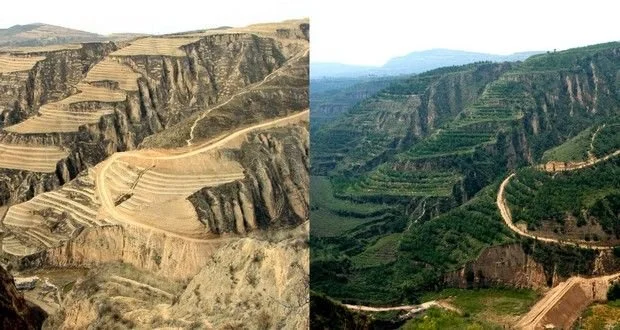Regrowing China's Loess Plateau (John D. Liu)
In 1994, China and The World Bank got together to restore biodiversity and life-systems to nearly 4 million acres of over-grazed, over-harvested lands in north-central China. “The primary goal was to restore agricultural production and incomes.” These lands had been Chinas’s bread basket for thousands of years until human-overuse led to a drought/erosion downward spiral. However, with the simple techniques (shown in the video below), and a little time to allow for life’s flourishing, the Loess Plateau’s ecosystems were revitalized, lifting millions of people out of poverty in less than 10 years. The regrown ecosystems also absorbed a lot of carbon and restored watersheds, reduced the impacts of global warming, and improved overall quality of life. Learn more in this documentary:
Large-scale, landscape restoration and reconnection is not unique to China. Here’s another John D. Liu documentary, showcasing summaries on the work to revitalize droughted lands in China, Jordan and Ethiopia.
Finally, it’s essential to note: soil quality is the basis of life on land. Here’s one more John D.Liu doco on the restoring soil microbiology. Microbial life is one of the most fascinating and essential things for humans in the known universe.
###
John D. Liu, born in Nashville, TN, and spent 15 years as a producer / cameraman for CBS News before beginning his work in ecology. He has since made dozens of documentaries on environmental restoration, overseen the distribution of +1,000 environmental films in China, and become a leading academic resource in ecological restoration. John’s film have won numerous awards, particularly for, “Green Gold” and “Hope in a Changing Climate”. He currently serves as ambassador for the Commonland Foundation, and chairman of the Advisory Board for Ecosystem Restoration Camps. Cover image here by Paul Kapp, borrowed from this article. These videos are part of our collection on “ Restoring Connective Tissue.”







